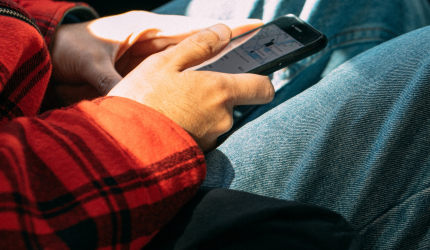Over the recent years, m-commerce has been increasing sharply and physical stores have been attracting more and more consumers by offering ever more services. Mobile apps are of great help in improving the in-store customer experience.
What are the various technologies?
Mobile apps may use a variety of technologies to interact with customers in the store or even before they decide to get in. Stores can use many of these tools simultaneously depending on their goals.
These technologies include notably:
- Ultrasonic beacons
- The QR code
- The NFC standing for « Near Field Communication », mainly used for contactless payment
- Image recognition
- The Wi-Fi connector
- The Bluetooth and the Beacons
Each technology has its strengths and weaknesses. For instance, the strength of image recognition is that it is up to the customer to choose whether to use it or not, on a voluntarily basis. Still, it is little used since it requires the upstream creation of an image database.
Other technologies have constraints that restrict their range. For example, customers must activate Bluetooth beforehand. Besides, they may be reluctant to share their geolocation or receive notifications.
Mobile apps can serve the in-store customer experience in many ways. We would like to present the main functions of mobile in stores.
1. Piloting the customer journey
In the major commercial centers, it is sometimes difficult to know where to start. Mobile apps can be useful to guide the consumer, whether through Beacons or ultrasonic beacons. Customers can thus geolocate themselves and head for the store or even the department that they want. These technologies offer an alternative to the GPS system which is not accurate enough in confined spaces. As for retailers, this enables them to analyze the customer journey and improve, thanks to these data, the in-store experience.
2. Bringing the customer to the store
Not only does the mobile help customers find the shop when they are actively seeking it, but it may also make them want to enter, through push notifications. For example, when a person is getting by a shop, the latter can send him/her a promotional offer or inform him/her that new products have arrived since their last visit. The possibilities are vast. Pay attention: always leave the choice to the visitor. Nobody likes to receive unwanted notifications!
3. Getting additional information
Unlike the web, stores cannot always display the exact composition of a product or its conditions of use. The mobile enables users to obtain additional information about the product that they are interested in. To this end, it is enough to scan a QR code. The store can then offer rich contents such as videos or refer to customer reviews. In a cross-channel context, one can use this technology to give the store visitor a chance to order the relevant article online and thus, to have it delivered right to the doorstep.
4. Facilitating payment
The m-payment is being democratized thanks to the NFC technology. This allows fluidifying the payment process and, at the same time, avoiding waiting times at the ticket machines. Mobile apps can also be used to set up a “Click and Collect” system. In other words, the customer can order via the app and come to the physical store to take the products. This system represents an important leverage for growth, especially for restaurants.
5. Interacting with customers
Mobile apps can also be useful for stores to improve their interactions with users. Some brands are taking advantage of new technologies such as virtual reality to create games. Other technologies such as the QR code can offer advice through chatbots or put the products in their original context of use.
These services contribute to upgrading the in-store customer experience but beware, for any mobile app project, one must remember that the UX is not limited simply to making beautiful interface drawings. This includes everything that surrounds the overall service experience.
Do you have a mobile app development project?
Get yourself accompanied by experts. Contact us.
Source: Mobile marketing at the service of the « IN STORE » consumer experience– Mobile Marketing Association France
Mobile marketing at the service of the « IN STORE » consumer experience » from Mobile Marketing Association France
Other articles that may be of interest to you:
- How to properly assess a mobile project?
- Your success depends on your Mobile App UX
- The mobile or the link between the real and the digital worlds




